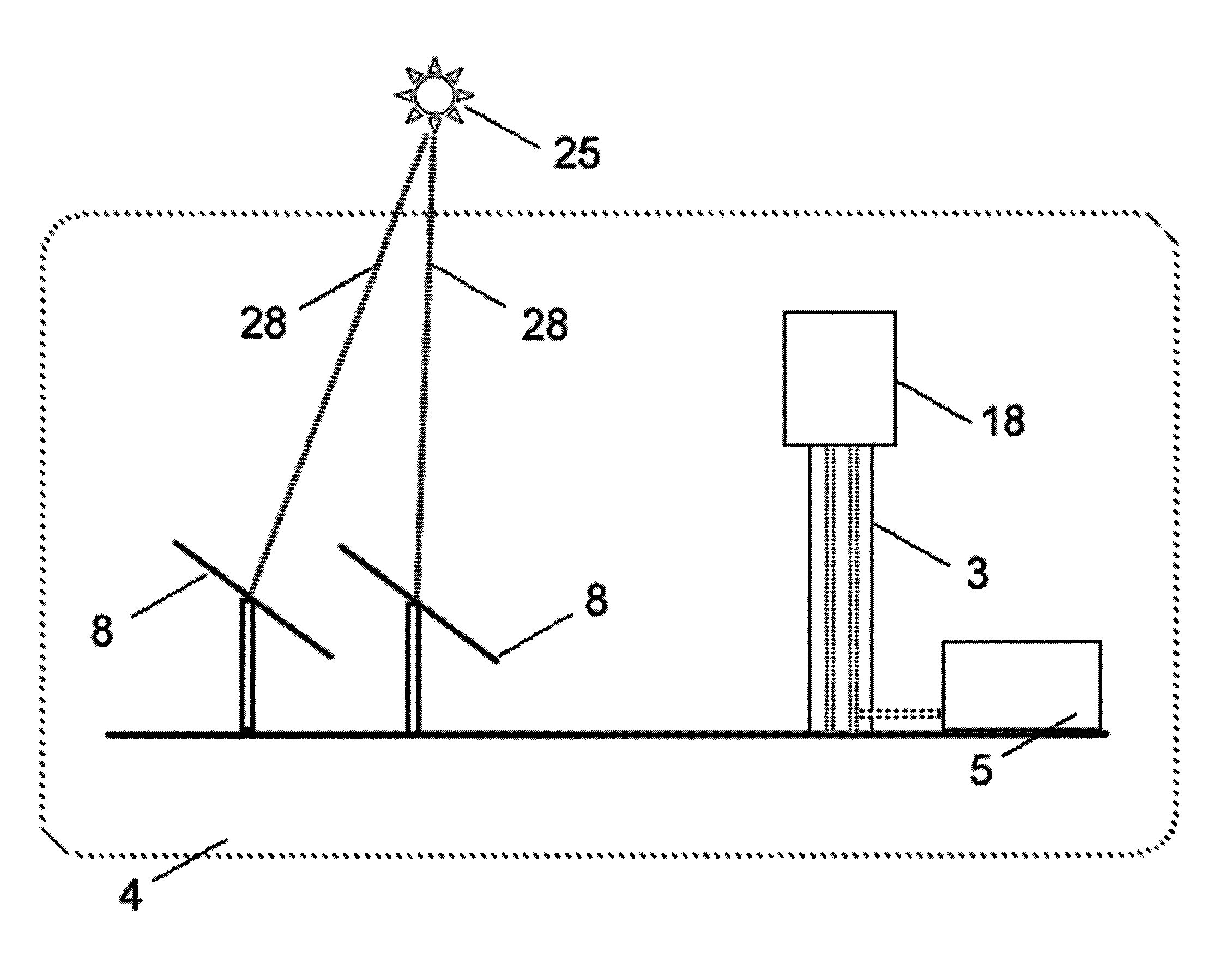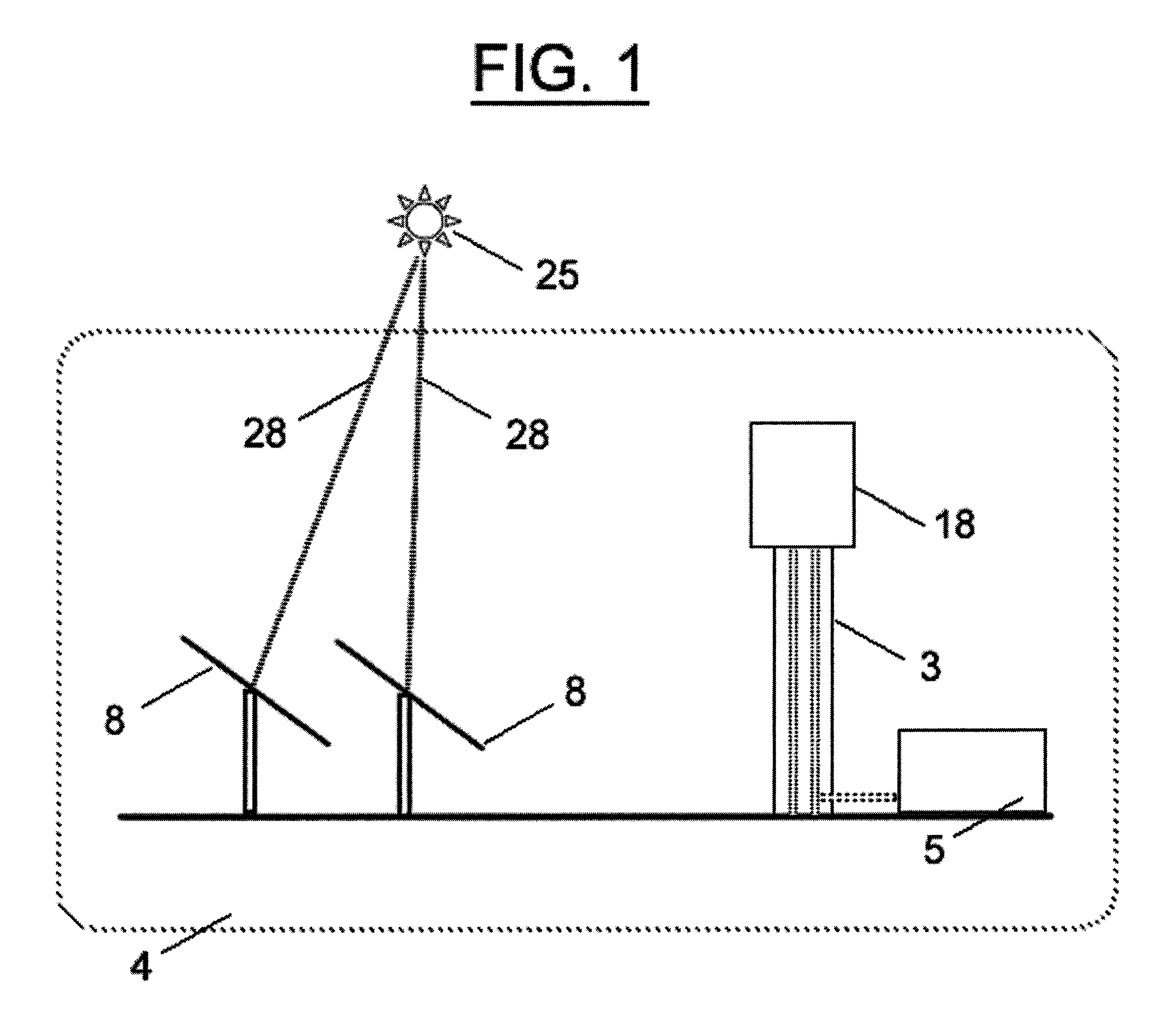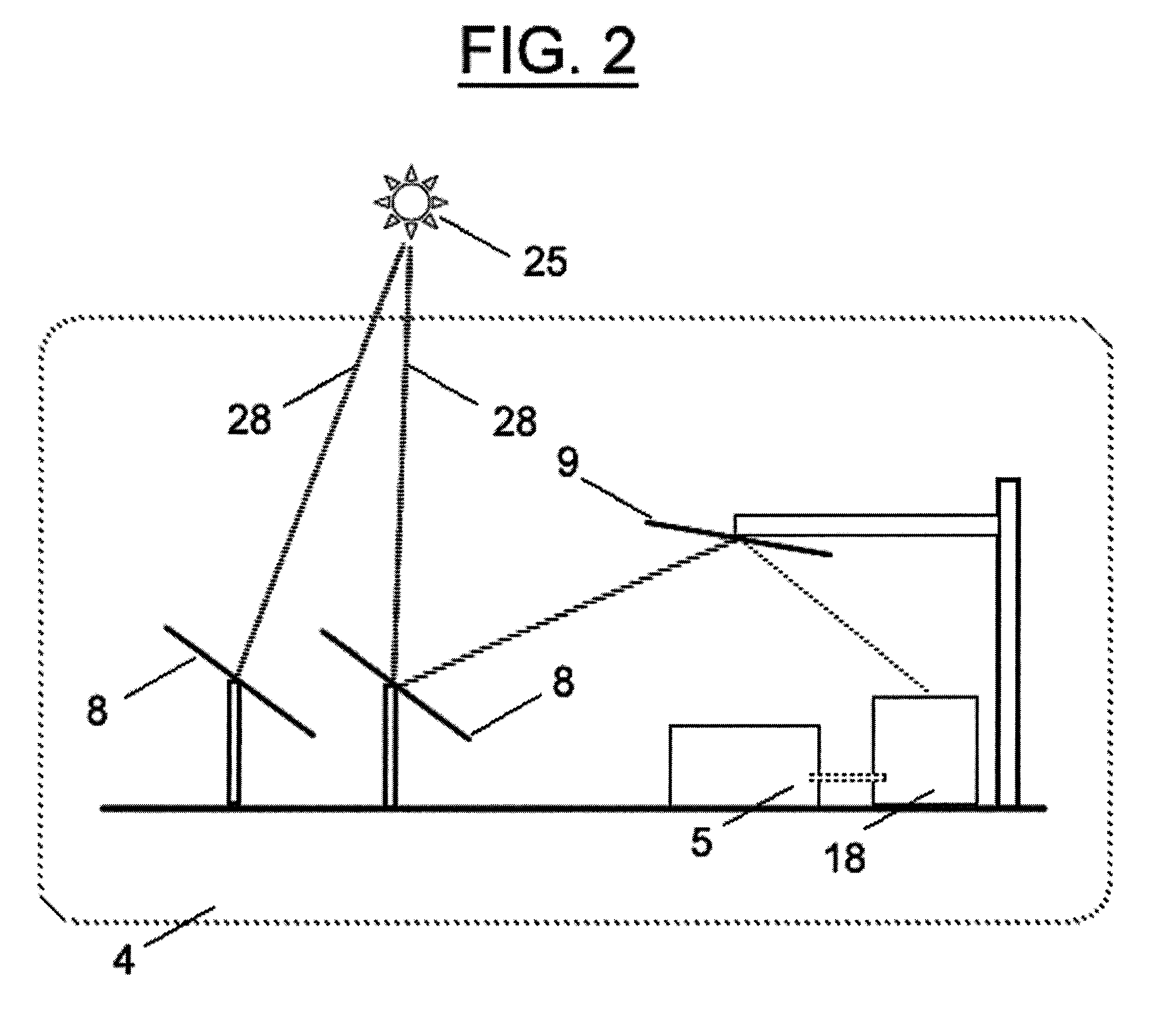High temperature solar receiver
a solar receiver and high temperature technology, applied in solar thermal energy generation, solar heat systems, solar light sources, etc., can solve the problems of relatively low thermodynamic efficiency of rankine cycles at moderate maximum temperatures, low conversion efficiency, etc., and achieve the effect of reducing radiant thermal loss
- Summary
- Abstract
- Description
- Claims
- Application Information
AI Technical Summary
Benefits of technology
Problems solved by technology
Method used
Image
Examples
Embodiment Construction
[0034]FIG. 1 shows a solar power system 4 in which heliostat-mounted mirrors 8 reflect incident solar radiation 28 onto a receiver 18 in which a working fluid (not shown) is heated for later use in an electric power generating plant 5. The heliostat-mounted mirrors 8 are capable of tracking the apparent movement of the sun 25 across the sky each day in order to maintain the reflective focus in the direction of the receiver 18 as the angle of the incident radiation 28 changes. The receiver 18 is located atop a tower 3, or in an alternative embodiment, shown in FIG. 2, is located on the ground, and the heliostat-mounted mirrors 8 reflect solar radiation onto one or more mirrors 9 which further reflect the radiation onto the receiver 18.
[0035]A receiver receives light both near its surface and deeper within. By progressively absorbing the light and converting it to heat energy both near the surface and deeper within the receiver, the energy can be captured and transferred to a working ...
PUM
 Login to View More
Login to View More Abstract
Description
Claims
Application Information
 Login to View More
Login to View More - R&D
- Intellectual Property
- Life Sciences
- Materials
- Tech Scout
- Unparalleled Data Quality
- Higher Quality Content
- 60% Fewer Hallucinations
Browse by: Latest US Patents, China's latest patents, Technical Efficacy Thesaurus, Application Domain, Technology Topic, Popular Technical Reports.
© 2025 PatSnap. All rights reserved.Legal|Privacy policy|Modern Slavery Act Transparency Statement|Sitemap|About US| Contact US: help@patsnap.com



